This shrimp ceviche is beginner-friendly and will absolutely wow anyone who tries it. Zesty lime, creamy avocado, and perfectly tender shrimp make this a healthy seafood dish you’ll want to put on repeat.
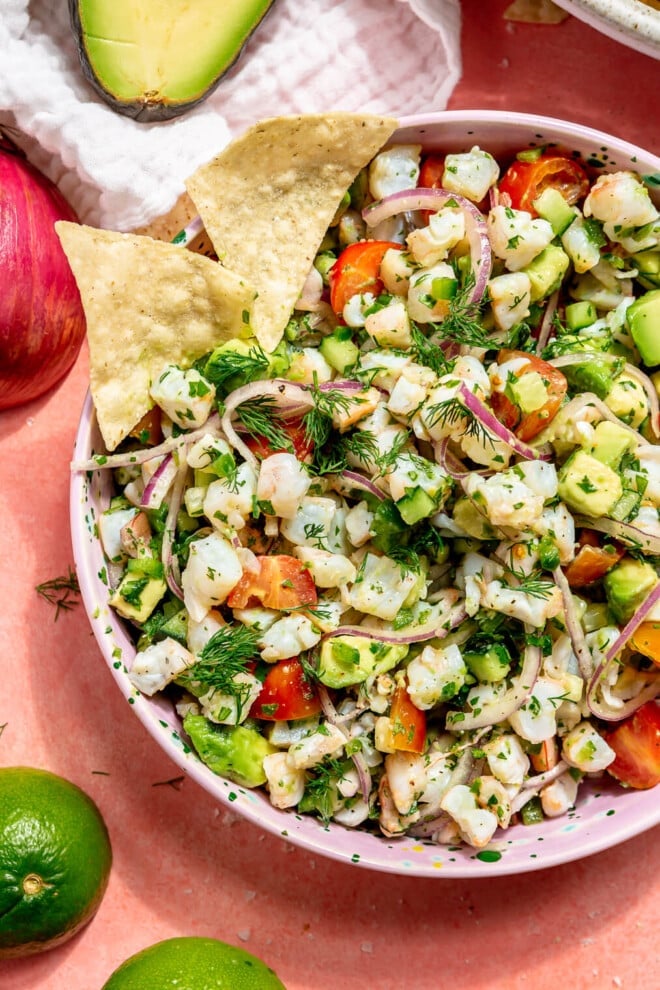
Table of Contents
This recipe is…
This is the shrimp ceviche of my dreams. I could eat it weekly and never get bored! Packed with healthy, fresh herbs, tomatoes, creamy avocado, and perfectly tender shrimp, you’re going to love it. The next time you want a fun and fresh dinner option or you want to plate a festive appetizer for a dinner party, look no further than this ceviche.
If you’re looking for more delicious seafood dishes, check out our classic fish ceviche with tomatillos, this easy honey garlic shrimp recipe, and these best-ever shrimp tacos.
Why You’ll Love This Recipe
- It’s beginner-friendly – we get it, making ceviche can be intimidating. This recipe is as easy and straight-forward as it gets, though.
- It’s delicious – it honestly doesn’t getter fresher or tastier than this recipe. It’s the perfect party appetizer or fun, different, date night-in meal.
Shrimp Ceviche Ingredients
You’ll need a handful of fresh ingredients for this recipe. Find ingredient notes (including substitutions and swaps) below.
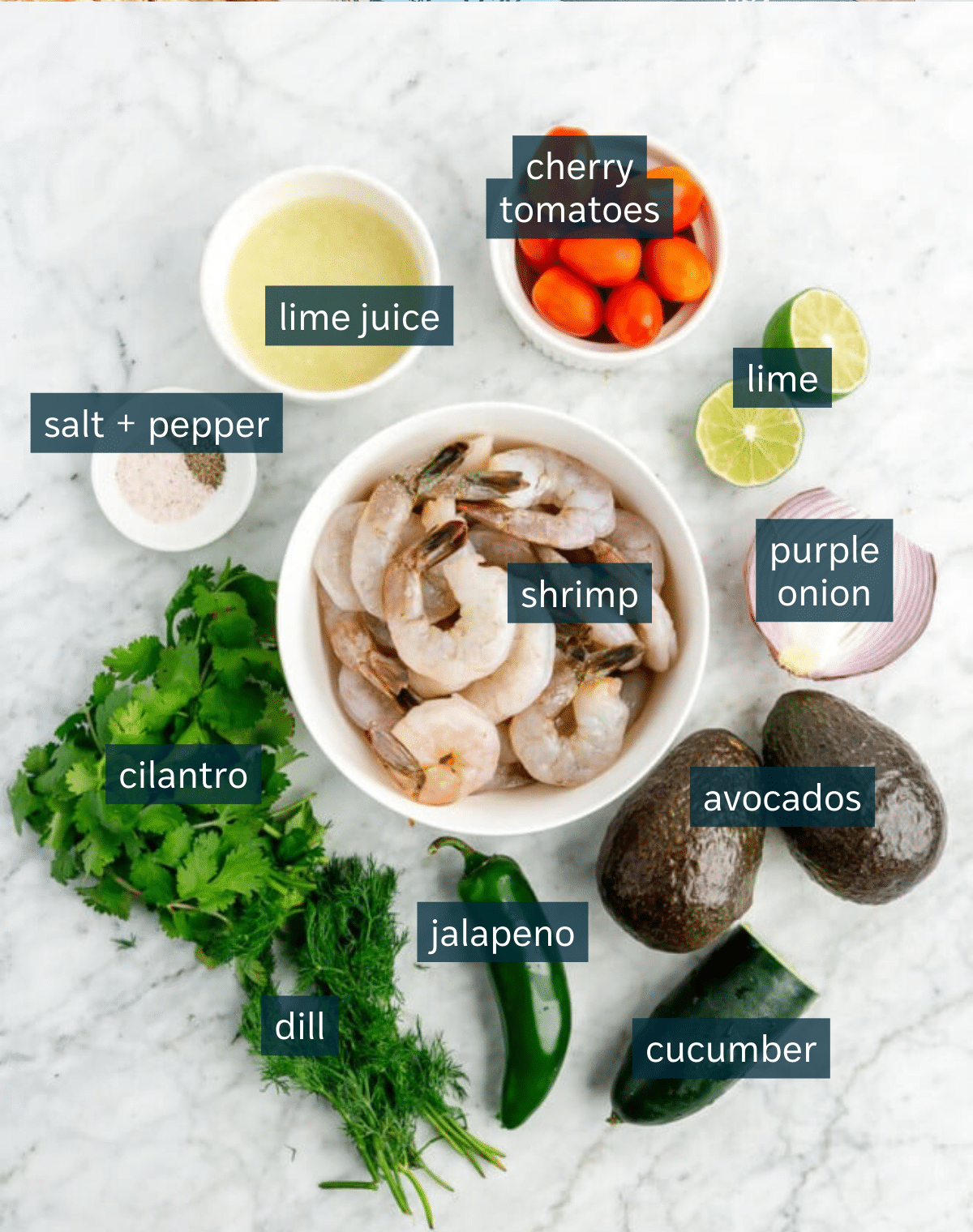
- Shrimp – grab fresh peeled and deveined shrimp for this ceviche recipe.
- Lime juice – fresh is always best, but especially in the case of ceviche! Either squeeze your own limes, or, if your grocery store carries bottled fresh lime juice, grab that to make things even easier.
- Jalapeño – deseed your jalapeno for a less spicy option, and keep the seeds in if you want the spice.
A full ingredient list with exact amounts can be found in the recipe card below.
Recipe Modifications
- Skip the spice – if you’re sensitive to spice, be sure to deseed the jalapeno or leave it out entirely.
- Use fish instead of shrimp – if you prefer a fish ceviche, hop on over to our original fish ceviche recipe.
How to Make Shrimp Ceviche
Shrimp ceviche is not nearly as tricky to pull off as it may seem. Here’s the full how-to:
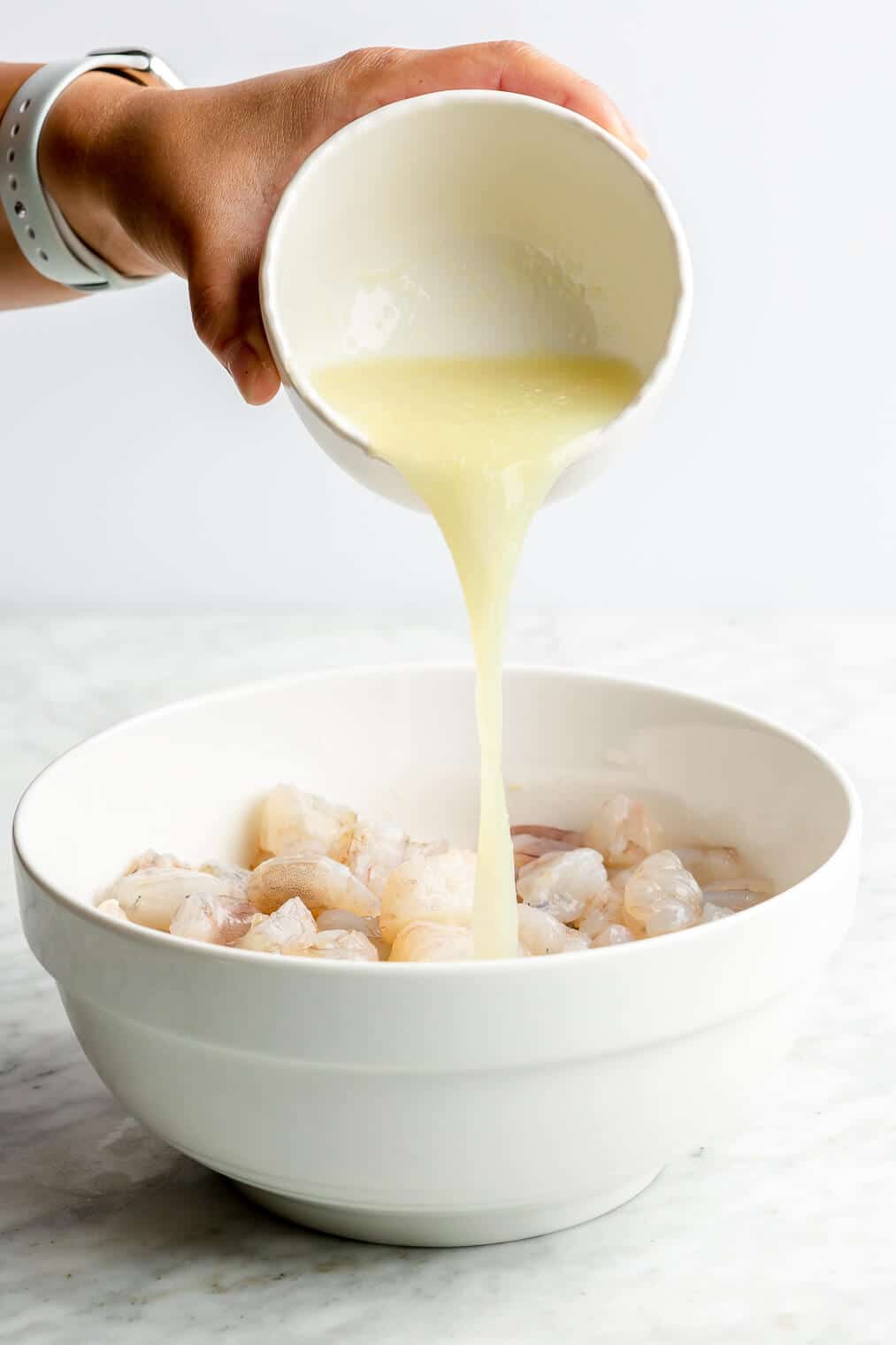
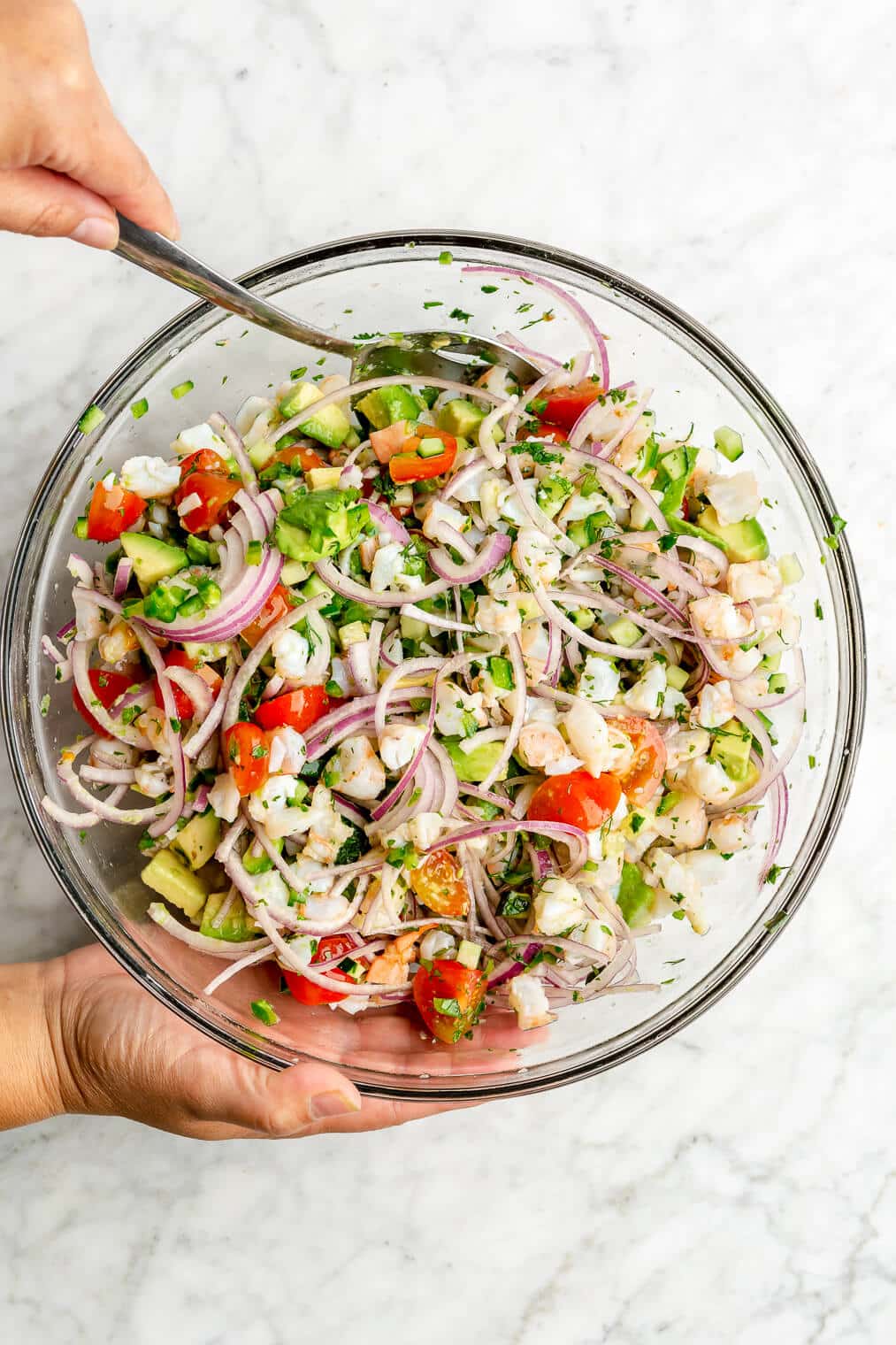
Step 1: Cut the shrimp into 1/4-inch pieces, and add them to a bowl with 1 cup of fresh lime juice and 1/2 of a teaspoon of sea salt. Stir to combine and submerge the shrimp in the lime juice. Cover the bowl and place the shrimp in the refrigerator for 1-2 hours, or until the shrimp are pink and no longer opaque.
Step 2: After 1-2 hours, drain the shrimp and transfer it to a large bowl with the rest of the ceviche ingredients, then stir to combine.
Recipe Tips
Buy high-quality shrimp – this isn’t a recipe that you want to skimp on ingredient-wise. Because we’re relying on lime juice to denature the shrimp (vs. heat, which kills more bacteria), high-quality, fresh shrimp is key!
Poach first, if you want – if the thought of shrimp cooking in lime juice is something you can’t quite get behind, know that you can still enjoy shrimp ceviche! Simply poach the shrimp for 1-2 minutes ahead of placing it in the lime juice.
Use fish instead – stumbled upon this recipe but not a fan of shrimp? Use fish in this recipe instead! If you’re tomatillo fan, try this fish ceviche verde.
How to Serve
Ceviche (shrimp or fish) is typically served alongside crunchy tortilla chips or plantain chips. If you want to skip the crunchy component altogether, you can also eat ceviche with a spoon!
How to Store
Store any leftover ceviche in the fridge. Stored this way, it’ll last for 2 days.
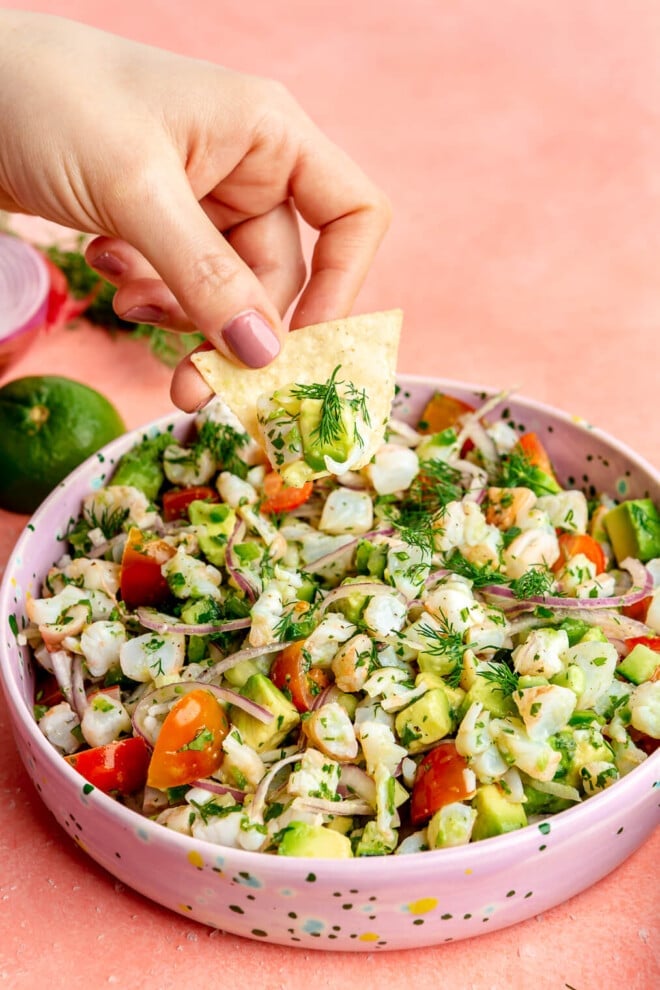
Frequently Asked Questions
Because the acid in the lime juice denatures the shrimp, the shrimp in ceviche isn’t technically raw. Lime juice doesn’t kill the same amount of bacteria as heat does, so be mindful of that and make sure the shrimp you’re using in the ceviche is fresh and high-quality. All that said, yes, you can eat the shrimp in shrimp ceviche.
You’ll want to let the raw shrimp soak in the lime juice + salt mixture for 1-2 hours, or until the shrimp becomes pink in color and no longer opaque. If you leave it for too much longer than 2 hours, you’ll run the risk of the shrimp toughening.
Shrimp is a really healthy source of protein if you can tolerate it! The rest of the ceviche mixture is made up of healthy veggies (some technically fruits) and herbs. If your body does well with the ingredient list, it’s definitely a very healthy option.
This is a pretty widely asked question (and for good reason!) The answer to this question: yes, shrimp ceviche is generally safe to eat.
Remember that even though the shrimp looks cooked, the citric acid in lime juice can’t kill as much bacteria as cooking with heat will. This doesn’t mean you should avoid eating shrimp ceviche though! Instead, take care to make sure you are buying high-quality fresh shrimp. If you’re super worried about it, you can poach the shrimp for 1-2 minutes beforehand to cook it through, but keep in mind that it won’t taste quite the same as traditional ceviche.
If you tried this Shrimp Ceviche recipe or any other recipe on my website, please leave a 🌟 star rating and let me know how it went in the 📝 comments below!
Easy Shrimp Ceviche with Avocado Recipe
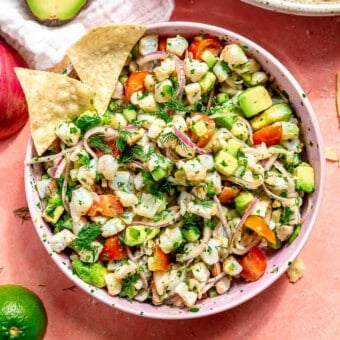
Ingredients
- 1½ pounds fresh shrimp peeled and deveined
- 1¼ cup fresh lime juice divided
- 1 teaspoon fine sea salt divided
- ½ purple onion thinly sliced
- 1 cup cherry tomatoes quartered
- ½ cucumber finely diced
- 2 avocados cubed
- ½ cup cilantro leaves finely chopped
- 2 tablespoons fresh dill shredded
- 1 jalapeno deseeded and finely chopped
- ¼ teaspoon ground black pepper
- Fresh lime for garnish
Instructions
- Cut the shrimp into ¼-inch pieces. Add them to a bowl with 1 cup of fresh lime juice and ½ teaspoon of sea salt. Stir to combine and submerge the shrimp in the lime juice.
- Cover the bowl and place the shrimp in the refrigerator for 1-2 hours, or until the shrimp are pink and no longer opaque.
- Drain the shrimp and combine in a large bowl with the remaining ingredients.
- Serve alongside chips and enjoy!
Recipe Notes
- Buy high-quality shrimp – this isn’t a recipe that you want to skimp on ingredient-wise. Because we’re relying on lime juice to denature the shrimp (vs. heat, which kills more bacteria), high-quality, fresh shrimp is key!
- Poach first, if you want – if the thought of shrimp cooking in lime juice is something you can’t quite get behind, know that you can still enjoy shrimp ceviche! Simply poach the shrimp for 1-2 minutes ahead of placing it in the lime juice.
- Use fish instead – stumbled upon this recipe but not a fan of shrimp? Use fish in this recipe instead! If you’re tomatillo fan, try this fish ceviche verde.
Nutrition
Like this recipe?
Leave a commentRecipe Contributors

Cassy Joy Garcia
Recipe Developer

Brandi Schilhab
Copywriter

Jessica Gaertner
Photographer
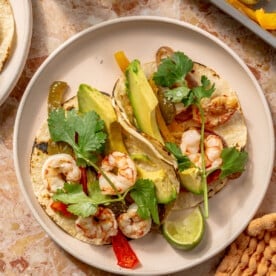
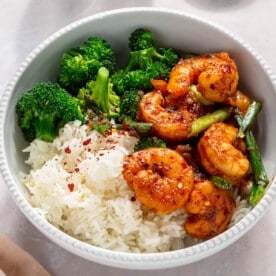
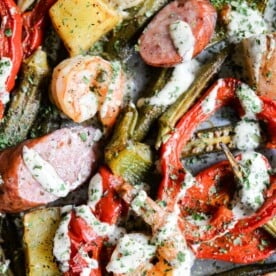

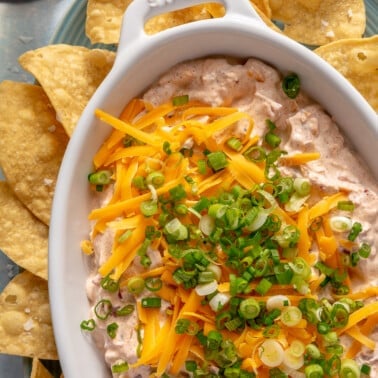
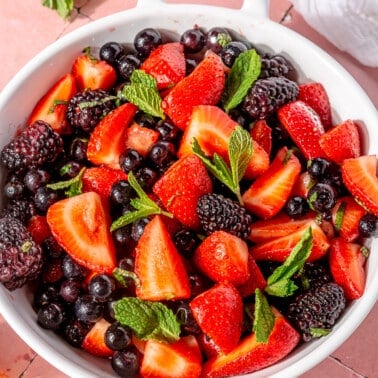










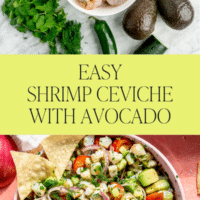
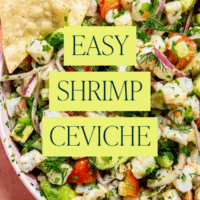
This was SO good! Will definitely be making again!
Aw, yay! We’re so glad you loved it, Dani!